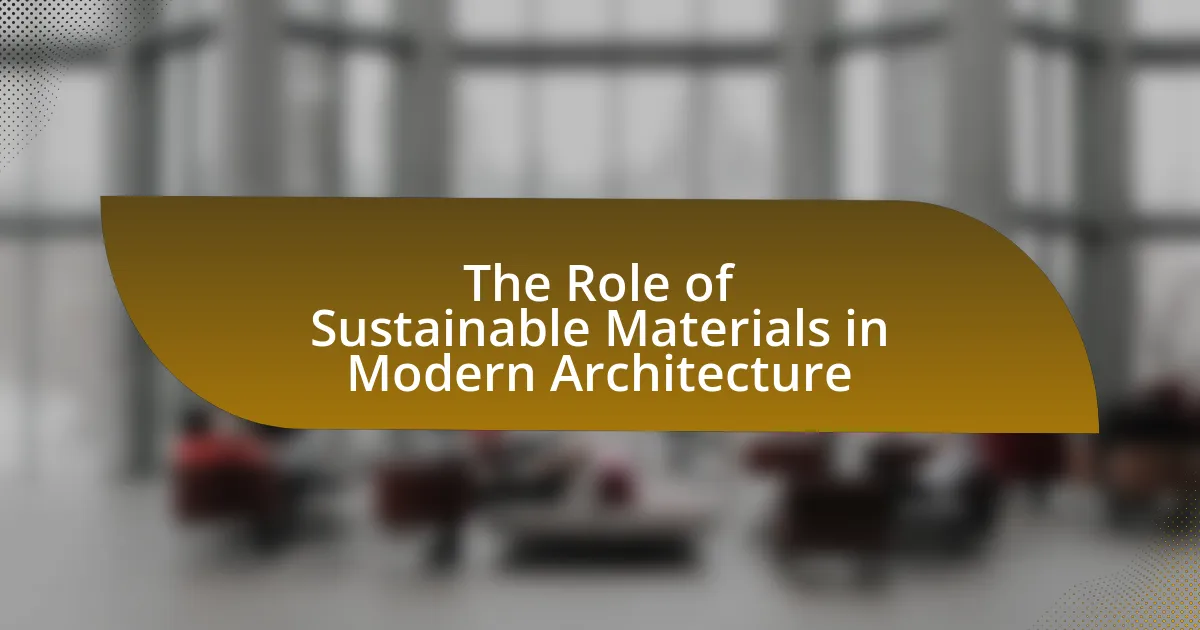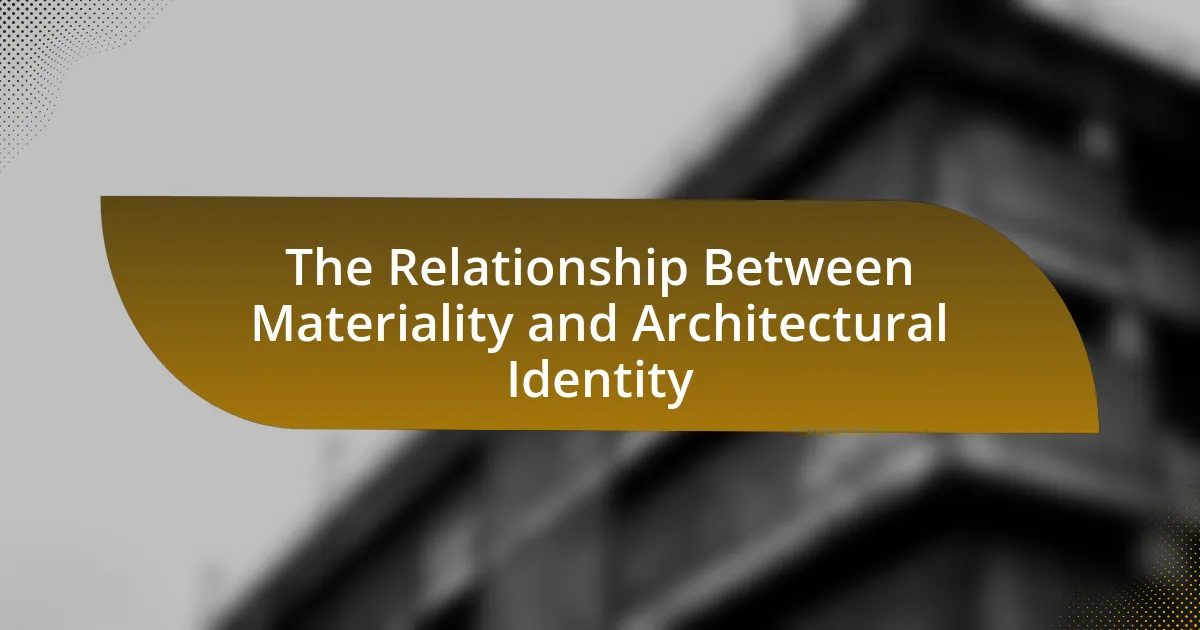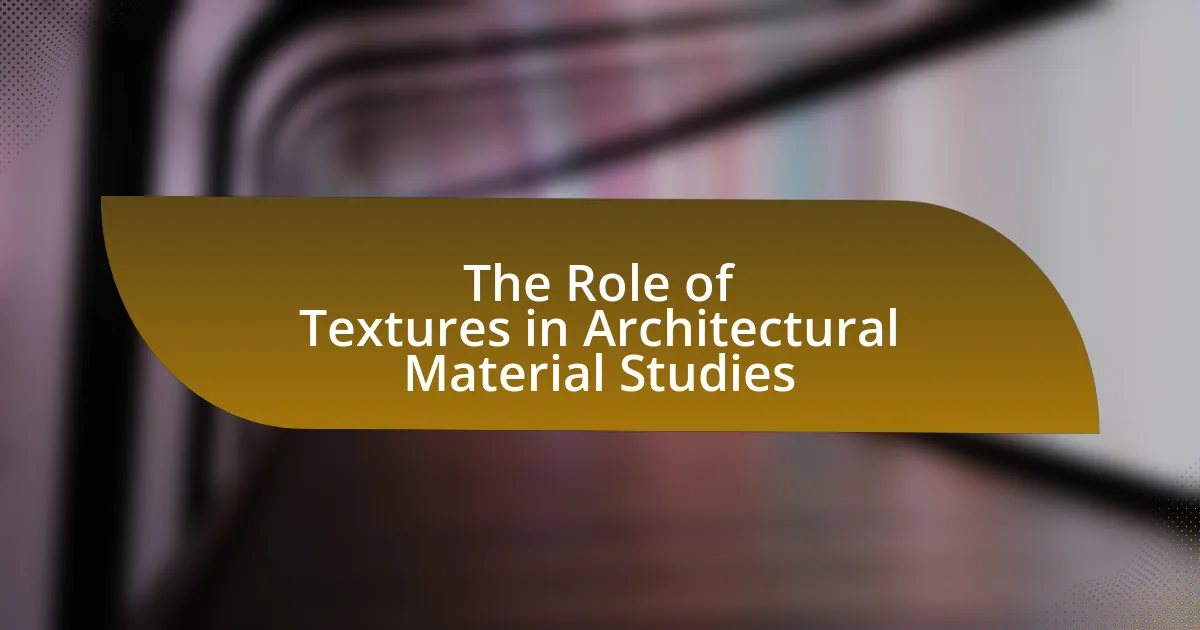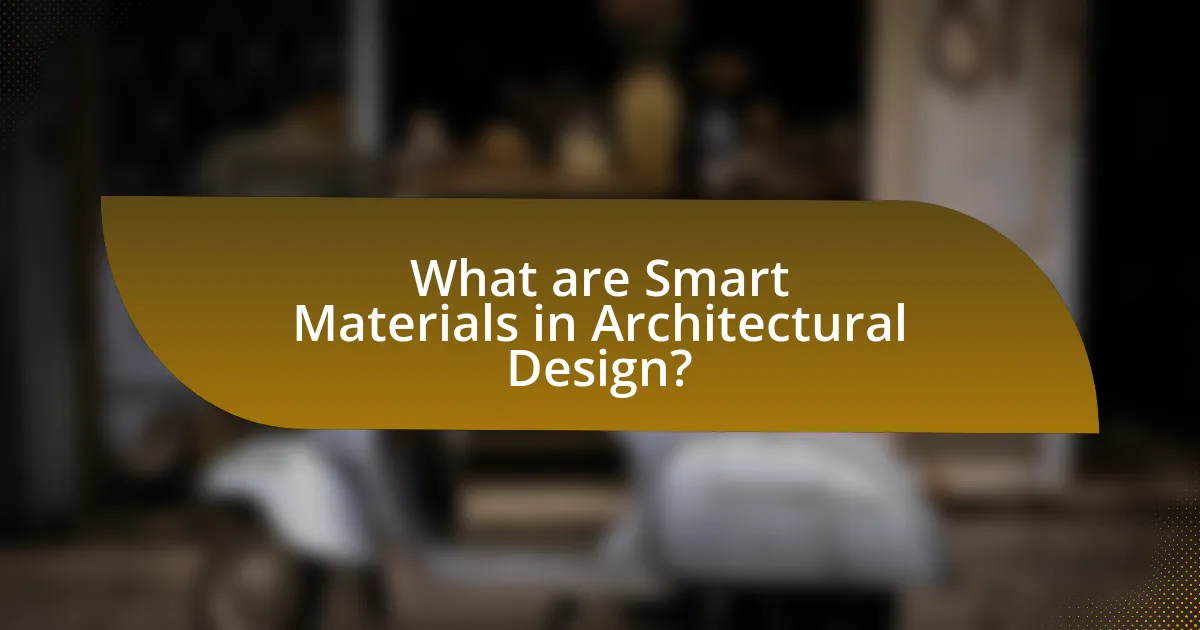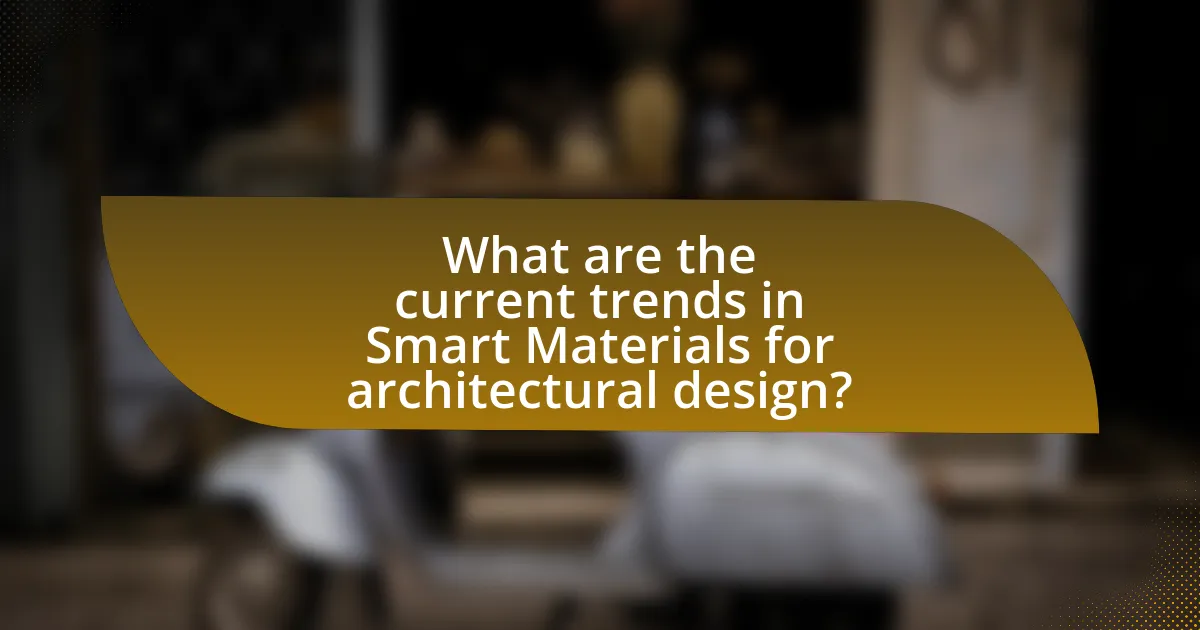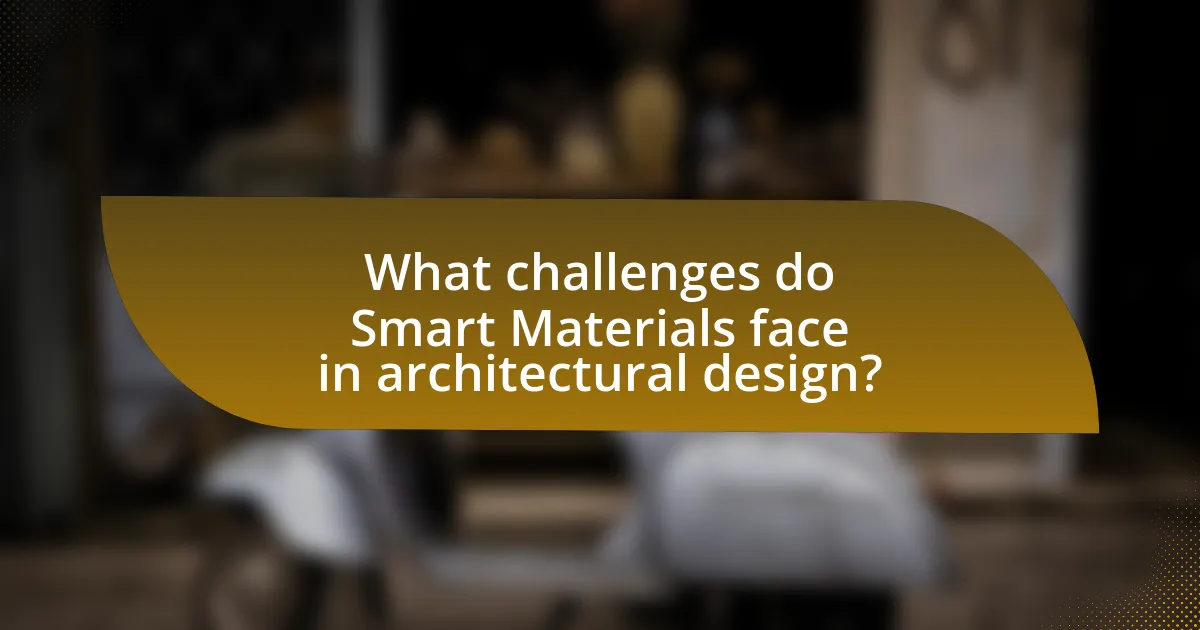Zero-Energy Buildings (ZEBs) are structures that achieve a net-zero energy balance by producing as much energy as they consume over a year, primarily through energy-efficient design and renewable energy sources. This article explores notable case studies of ZEBs worldwide, highlighting key examples such as the Bullitt Center in Seattle and Bosco Verticale in Milan, which demonstrate innovative strategies for energy efficiency and sustainability. Additionally, it discusses the challenges and financial barriers associated with ZEB implementation, the role of technology and policy in promoting these buildings, and the future trends shaping the zero-energy movement. The article emphasizes the importance of collaboration among stakeholders and community initiatives in advancing awareness and adoption of Zero-Energy Building practices.

What are Zero-Energy Buildings?
Zero-Energy Buildings (ZEBs) are structures that produce as much energy as they consume over a year, resulting in a net-zero energy balance. These buildings achieve this through a combination of energy-efficient design, renewable energy sources, and advanced technologies. For instance, a study by the U.S. Department of Energy indicates that ZEBs can significantly reduce energy consumption by utilizing solar panels, high-performance insulation, and energy-efficient appliances, thereby minimizing reliance on fossil fuels and lowering greenhouse gas emissions.
How is a Zero-Energy Building defined?
A Zero-Energy Building is defined as a structure that produces as much energy as it consumes over the course of a year. This definition is supported by the U.S. Department of Energy, which states that such buildings achieve net-zero energy consumption through a combination of energy efficiency measures and on-site renewable energy generation.
What are the key characteristics of Zero-Energy Buildings?
Zero-Energy Buildings (ZEBs) are structures that produce as much energy as they consume over a year. Key characteristics include high energy efficiency, which is achieved through superior insulation, energy-efficient windows, and advanced HVAC systems. Additionally, ZEBs utilize renewable energy sources, such as solar panels or wind turbines, to generate on-site energy. They often incorporate smart technologies for energy management, optimizing energy use in real-time. According to the U.S. Department of Energy, ZEBs can significantly reduce greenhouse gas emissions and reliance on fossil fuels, contributing to sustainability goals.
How do Zero-Energy Buildings differ from traditional buildings?
Zero-Energy Buildings (ZEBs) differ from traditional buildings primarily in their energy consumption and production balance, as ZEBs generate as much energy as they consume over a year. Traditional buildings typically rely on external energy sources, leading to a net energy consumption. ZEBs achieve this through energy-efficient designs, renewable energy systems like solar panels, and advanced technologies that minimize energy use, resulting in a sustainable and self-sufficient energy profile. According to the U.S. Department of Energy, ZEBs can significantly reduce greenhouse gas emissions and reliance on fossil fuels, highlighting their environmental benefits compared to conventional structures.
Why are Zero-Energy Buildings important?
Zero-Energy Buildings (ZEBs) are important because they produce as much energy as they consume over a year, significantly reducing reliance on fossil fuels and minimizing greenhouse gas emissions. This energy balance contributes to sustainability goals, as ZEBs can help mitigate climate change by lowering the carbon footprint associated with traditional buildings. According to the U.S. Department of Energy, buildings account for nearly 40% of total energy consumption in the United States, making the transition to zero-energy designs crucial for achieving national energy efficiency targets and enhancing energy security.
What environmental benefits do Zero-Energy Buildings provide?
Zero-Energy Buildings (ZEBs) provide significant environmental benefits by minimizing energy consumption and reducing greenhouse gas emissions. These buildings are designed to produce as much energy as they consume over a year, often utilizing renewable energy sources such as solar panels. According to the U.S. Department of Energy, ZEBs can reduce energy use by up to 50% compared to conventional buildings, leading to a substantial decrease in reliance on fossil fuels. Additionally, ZEBs contribute to improved air quality by decreasing emissions associated with energy production, thus promoting a healthier environment. The integration of energy-efficient technologies and sustainable materials further enhances their positive impact on ecosystems and resource conservation.
How do Zero-Energy Buildings contribute to energy independence?
Zero-Energy Buildings (ZEBs) contribute to energy independence by generating as much energy as they consume over a year, thus reducing reliance on external energy sources. By utilizing renewable energy technologies such as solar panels and energy-efficient systems, ZEBs minimize energy consumption and promote local energy production. For instance, a study by the U.S. Department of Energy indicates that ZEBs can significantly lower energy bills and decrease the demand on the grid, which enhances energy security. This self-sufficiency in energy production supports national and local efforts to achieve energy independence, as it lessens vulnerability to fluctuations in energy prices and supply disruptions.
What are the challenges in implementing Zero-Energy Buildings?
The challenges in implementing Zero-Energy Buildings (ZEBs) include high initial costs, technological complexity, and regulatory barriers. High initial costs often deter developers and homeowners, as ZEBs typically require advanced materials and technologies that can significantly increase upfront investment. Technological complexity arises from the need for integrated systems that manage energy generation, storage, and consumption efficiently, which can be difficult to design and maintain. Regulatory barriers may include outdated building codes and zoning laws that do not accommodate innovative energy solutions, hindering the adoption of ZEBs. These challenges collectively impede the widespread implementation of Zero-Energy Buildings despite their long-term benefits in energy efficiency and sustainability.
What financial barriers exist for Zero-Energy Building projects?
Financial barriers for Zero-Energy Building projects include high initial capital costs, limited access to financing, and uncertain return on investment. High initial capital costs arise from advanced technologies and materials required for energy efficiency and renewable energy integration, which can deter investors. Limited access to financing is often due to a lack of familiarity among lenders with Zero-Energy concepts, leading to higher perceived risks. Additionally, uncertain return on investment stems from fluctuating energy prices and the long payback periods associated with energy-saving technologies, making it challenging for stakeholders to justify the upfront expenditures.
How do regulatory frameworks impact Zero-Energy Building development?
Regulatory frameworks significantly influence Zero-Energy Building (ZEB) development by establishing standards and incentives that promote energy efficiency and renewable energy integration. These frameworks often include building codes, zoning laws, and financial incentives that encourage the adoption of sustainable practices. For instance, the International Energy Conservation Code (IECC) sets minimum energy efficiency requirements for buildings, which directly impacts the design and construction of ZEBs. Additionally, local governments may offer tax credits or grants for projects that meet ZEB criteria, further incentivizing developers to pursue energy-neutral designs. Such regulations not only facilitate the implementation of innovative technologies but also ensure that ZEBs contribute to broader environmental goals, such as reducing greenhouse gas emissions and promoting sustainable urban development.
How can Zero-Energy Buildings be designed effectively?
Zero-Energy Buildings can be designed effectively by integrating energy-efficient technologies, utilizing renewable energy sources, and optimizing building orientation and materials. Effective design begins with a comprehensive energy analysis to identify energy needs and potential savings. Incorporating high-performance insulation, energy-efficient windows, and advanced HVAC systems reduces energy consumption significantly. Additionally, the use of solar panels or wind turbines can generate on-site renewable energy, achieving net-zero energy consumption. For instance, the Bullitt Center in Seattle, recognized as one of the greenest commercial buildings, employs these strategies, resulting in a 100% renewable energy supply. This approach demonstrates that effective design combines energy efficiency with renewable energy generation to create sustainable, zero-energy buildings.
What technologies are commonly used in Zero-Energy Buildings?
Zero-Energy Buildings commonly utilize technologies such as photovoltaic solar panels, energy-efficient HVAC systems, advanced insulation materials, and smart energy management systems. Photovoltaic solar panels convert sunlight into electricity, significantly reducing reliance on external energy sources. Energy-efficient HVAC systems optimize heating and cooling, minimizing energy consumption. Advanced insulation materials enhance thermal performance, reducing heating and cooling demands. Smart energy management systems monitor and control energy use, ensuring that energy production matches consumption. These technologies collectively enable Zero-Energy Buildings to achieve net-zero energy consumption, as evidenced by numerous case studies demonstrating their effectiveness in various climates and settings.
How do renewable energy sources integrate into Zero-Energy Buildings?
Renewable energy sources integrate into Zero-Energy Buildings by providing on-site energy generation that meets or exceeds the building’s energy consumption. These buildings typically utilize solar panels, wind turbines, and geothermal systems to harness renewable energy, ensuring that they produce as much energy as they consume over a year. For instance, a study by the U.S. Department of Energy indicates that solar photovoltaic systems can generate significant electricity, often covering 100% of a building’s energy needs in optimal conditions. This integration not only reduces reliance on fossil fuels but also contributes to sustainability goals by minimizing carbon emissions.
What role does energy-efficient design play in Zero-Energy Buildings?
Energy-efficient design is crucial in Zero-Energy Buildings as it minimizes energy consumption while maximizing energy production. This design approach incorporates strategies such as high-performance insulation, energy-efficient windows, and advanced HVAC systems, which collectively reduce the overall energy demand of the building. For instance, a study by the U.S. Department of Energy indicates that implementing energy-efficient design can lead to a reduction in energy use by up to 50% compared to conventional buildings. By achieving such reductions, Zero-Energy Buildings can generate renewable energy on-site, typically through solar panels, to offset their remaining energy needs, ultimately reaching a net-zero energy status.

What are some notable case studies of Zero-Energy Buildings worldwide?
Notable case studies of Zero-Energy Buildings worldwide include the Bullitt Center in Seattle, Washington, which is designed to produce more energy than it consumes, achieving net-zero energy through solar panels and energy-efficient systems. Another example is the Bosco Verticale in Milan, Italy, which integrates energy-efficient technologies and green architecture to minimize energy use while providing a habitat for urban biodiversity. The Edge in Amsterdam, Netherlands, is also recognized for its innovative design and energy management systems that allow it to operate at net-zero energy consumption. These buildings exemplify the principles of sustainability and energy efficiency, demonstrating the feasibility of zero-energy construction in diverse climates and urban settings.
Which countries are leading in Zero-Energy Building initiatives?
Countries leading in Zero-Energy Building initiatives include Germany, the United States, and Sweden. Germany has implemented stringent energy efficiency standards and incentives, resulting in a significant number of zero-energy buildings, particularly in urban areas. The United States has seen a rise in zero-energy projects, especially in states like California, which has set ambitious goals for energy-efficient buildings. Sweden is also at the forefront, with government policies promoting sustainable construction and energy efficiency, contributing to a growing number of zero-energy buildings.
What are the most successful Zero-Energy Building projects in Europe?
The most successful Zero-Energy Building projects in Europe include the Bosco Verticale in Milan, Italy, and the Bullitt Center in Seattle, USA, which, while not in Europe, has influenced European designs. Bosco Verticale features residential towers that integrate energy-efficient systems and green spaces, achieving energy neutrality through renewable energy sources. The building generates more energy than it consumes, with a reported energy surplus of 30%. Another notable project is the PlusEnergy House in Germany, which produces 60% more energy than it consumes annually, showcasing advanced insulation and solar technology. These projects exemplify the successful implementation of zero-energy principles in urban environments across Europe.
How have Zero-Energy Buildings evolved in North America?
Zero-Energy Buildings (ZEBs) in North America have evolved significantly since the early 2000s, transitioning from experimental designs to mainstream construction practices. Initially, ZEBs were primarily developed as pilot projects, with notable examples like the Bullitt Center in Seattle, which opened in 2013 and is often cited as one of the greenest commercial buildings in the world. As of 2021, the U.S. Department of Energy reported that over 500 ZEBs had been constructed across the country, reflecting a growing commitment to sustainable building practices. This evolution has been driven by advancements in energy-efficient technologies, increased awareness of climate change, and supportive policies at federal, state, and local levels, such as the adoption of the 2030 Challenge, which aims for all new buildings to be carbon-neutral by 2030.
What lessons can be learned from specific case studies?
Specific case studies of zero-energy buildings reveal several key lessons. First, effective integration of renewable energy sources, such as solar panels, significantly reduces energy consumption and operational costs. For instance, the Bullitt Center in Seattle, which utilizes solar energy, demonstrates that buildings can achieve net-zero energy status while providing comfortable workspaces. Second, the importance of energy-efficient design is highlighted; the Edge in Amsterdam employs advanced insulation and smart technology to minimize energy use, showcasing that design plays a crucial role in achieving zero-energy goals. Third, stakeholder collaboration is essential; the Bosco Verticale in Milan involved architects, engineers, and local authorities working together to create a sustainable urban environment, illustrating that teamwork can lead to innovative solutions. These lessons underscore the necessity of combining technology, design, and collaboration to successfully implement zero-energy buildings.
What innovative strategies were employed in the Bullitt Center in Seattle?
The Bullitt Center in Seattle employed several innovative strategies to achieve its status as a model for zero-energy buildings. Key strategies include the use of a solar array that generates more energy than the building consumes, a rainwater harvesting system that provides all water needs, and a focus on sustainable materials throughout construction. Additionally, the building features advanced energy-efficient systems, such as natural ventilation and daylighting, which reduce reliance on artificial lighting and HVAC systems. These strategies collectively contribute to the Bullitt Center’s designation as one of the greenest commercial buildings in the world, demonstrating a commitment to sustainability and energy efficiency.
How did the Bosco Verticale in Milan achieve its energy goals?
The Bosco Verticale in Milan achieved its energy goals through the integration of extensive vegetation, which enhances energy efficiency and reduces energy consumption. The two residential towers are covered with approximately 9,000 trees, 20,000 shrubs, and 100,000 plants, which provide natural insulation, reduce heat loss, and improve air quality. This green architecture contributes to energy savings by lowering the need for heating and cooling, thus aligning with zero-energy building principles. Additionally, the design incorporates renewable energy sources, such as solar panels, which further support its energy objectives.
What are the future trends for Zero-Energy Buildings?
Future trends for Zero-Energy Buildings (ZEBs) include increased integration of renewable energy technologies, enhanced energy efficiency measures, and the adoption of smart building technologies. The shift towards renewable energy sources, such as solar panels and wind turbines, is expected to become more prevalent, driven by advancements in technology and decreasing costs. Additionally, energy efficiency will be improved through better insulation, high-performance windows, and energy-efficient appliances, which are essential for minimizing energy consumption. Smart building technologies, including IoT devices and energy management systems, will facilitate real-time monitoring and optimization of energy use, contributing to the overall effectiveness of ZEBs. According to the U.S. Department of Energy, the number of ZEBs is projected to grow significantly as building codes evolve and sustainability becomes a priority in urban planning.
How is technology expected to shape the future of Zero-Energy Buildings?
Technology is expected to significantly enhance the efficiency and sustainability of Zero-Energy Buildings (ZEBs) by integrating advanced energy management systems, renewable energy sources, and smart building technologies. These innovations will enable ZEBs to optimize energy consumption, generate renewable energy on-site, and improve overall building performance. For instance, the use of photovoltaic panels and energy storage systems allows buildings to produce more energy than they consume, achieving net-zero energy status. Additionally, smart sensors and automation systems can monitor and adjust energy use in real-time, further reducing waste and enhancing occupant comfort. According to the U.S. Department of Energy, implementing these technologies can lead to energy savings of up to 50% in new construction projects, demonstrating their critical role in the future of ZEBs.
What role will policy changes play in the expansion of Zero-Energy Buildings?
Policy changes will significantly accelerate the expansion of Zero-Energy Buildings (ZEBs) by establishing regulatory frameworks that incentivize energy efficiency and renewable energy integration. For instance, governments can implement building codes that mandate energy performance standards, which have been shown to increase the adoption of ZEBs. A study by the International Energy Agency indicates that countries with stringent energy efficiency policies see a 30% higher rate of ZEB construction compared to those without such regulations. Additionally, financial incentives, such as tax credits and grants for ZEB projects, can lower initial investment costs, making these buildings more attractive to developers and homeowners. Thus, effective policy changes are crucial for driving the growth of Zero-Energy Buildings globally.

How can stakeholders promote Zero-Energy Building practices?
Stakeholders can promote Zero-Energy Building practices by implementing policies that incentivize energy efficiency and renewable energy use. For instance, governments can offer tax credits or grants for projects that meet Zero-Energy standards, encouraging developers to adopt these practices. Additionally, industry organizations can provide training and resources to architects and builders on best practices for designing and constructing Zero-Energy Buildings. Research indicates that regions with supportive policies see a higher adoption rate of energy-efficient technologies, as evidenced by California’s Title 24 building standards, which have significantly increased the number of Zero-Energy Buildings in the state.
What best practices should architects and builders follow?
Architects and builders should prioritize energy efficiency, sustainable materials, and integrated design when constructing zero-energy buildings. Energy efficiency can be achieved through high-performance insulation, energy-efficient windows, and advanced HVAC systems, which collectively reduce energy consumption significantly. Sustainable materials, such as recycled or locally sourced products, minimize environmental impact and enhance the building’s sustainability profile. Integrated design involves collaboration among architects, engineers, and builders from the project’s inception, ensuring that all aspects of the building work harmoniously towards achieving zero-energy goals. These practices are supported by case studies demonstrating that buildings designed with these principles can achieve net-zero energy consumption, as evidenced by projects like the Bullitt Center in Seattle, which utilizes solar energy and rainwater harvesting to meet its energy needs.
How can collaboration among stakeholders enhance Zero-Energy Building projects?
Collaboration among stakeholders enhances Zero-Energy Building projects by fostering integrated design approaches that optimize energy efficiency and sustainability. When architects, engineers, contractors, and building owners work together from the project’s inception, they can align their goals and share expertise, leading to innovative solutions that reduce energy consumption. For instance, a study by the National Renewable Energy Laboratory found that collaborative design processes can lead to energy savings of up to 30% compared to traditional methods. This synergy not only improves the building’s performance but also ensures that all parties are invested in achieving the Zero-Energy goal, ultimately resulting in more successful project outcomes.
What resources are available for educating the public about Zero-Energy Buildings?
Resources available for educating the public about Zero-Energy Buildings include government websites, educational institutions, and non-profit organizations. For instance, the U.S. Department of Energy provides comprehensive guides and case studies on Zero-Energy Buildings, detailing design strategies and performance metrics. Additionally, organizations like the International Living Future Institute offer resources such as webinars and certification programs that focus on sustainable building practices. Educational institutions often incorporate Zero-Energy Building concepts into their curricula, providing workshops and seminars to engage the community. These resources collectively enhance public understanding and awareness of Zero-Energy Buildings.
What practical steps can individuals take to support Zero-Energy Buildings?
Individuals can support Zero-Energy Buildings by adopting energy-efficient practices in their homes and advocating for sustainable building policies. Implementing energy-saving measures such as using LED lighting, high-efficiency appliances, and proper insulation reduces energy consumption, aligning with the principles of Zero-Energy Buildings. Additionally, individuals can participate in community initiatives that promote renewable energy sources, such as solar panel installations, which contribute to achieving net-zero energy consumption. Research indicates that buildings equipped with renewable energy systems can significantly lower their carbon footprint, supporting the transition to sustainable living environments.
How can homeowners incorporate Zero-Energy principles in renovations?
Homeowners can incorporate Zero-Energy principles in renovations by focusing on energy efficiency and renewable energy generation. This includes upgrading insulation, installing energy-efficient windows and doors, and utilizing high-efficiency heating and cooling systems to reduce energy consumption. Additionally, homeowners can integrate renewable energy sources such as solar panels or wind turbines to generate on-site energy, aiming for a balance between energy consumed and produced. According to the U.S. Department of Energy, buildings that achieve Zero-Energy status produce as much energy as they consume over the course of a year, demonstrating the effectiveness of these principles in reducing overall energy use and costs.
What community initiatives can promote Zero-Energy Building awareness?
Community initiatives that can promote Zero-Energy Building awareness include educational workshops, local government incentives, and collaborative projects with schools and universities. Educational workshops can provide residents with information on the benefits and technologies of Zero-Energy Buildings, fostering a knowledgeable community. Local government incentives, such as tax rebates or grants for energy-efficient renovations, encourage homeowners to consider Zero-Energy options. Collaborative projects with educational institutions can engage students in hands-on experiences related to sustainable building practices, further spreading awareness. These initiatives have been shown to increase community engagement and understanding of energy-efficient practices, as evidenced by programs like the U.S. Department of Energy’s Solar Decathlon, which highlights innovative building designs and technologies.









